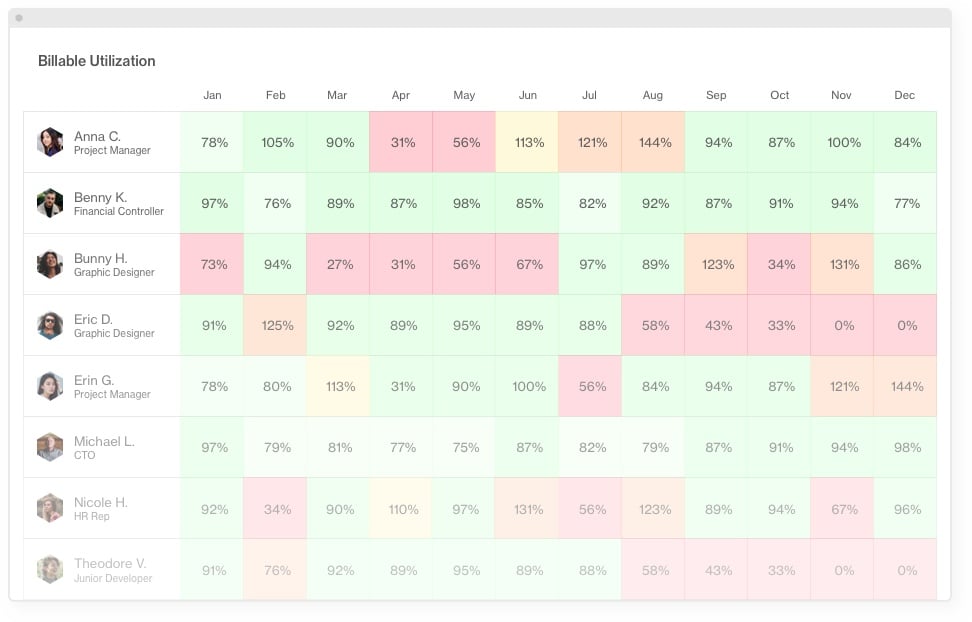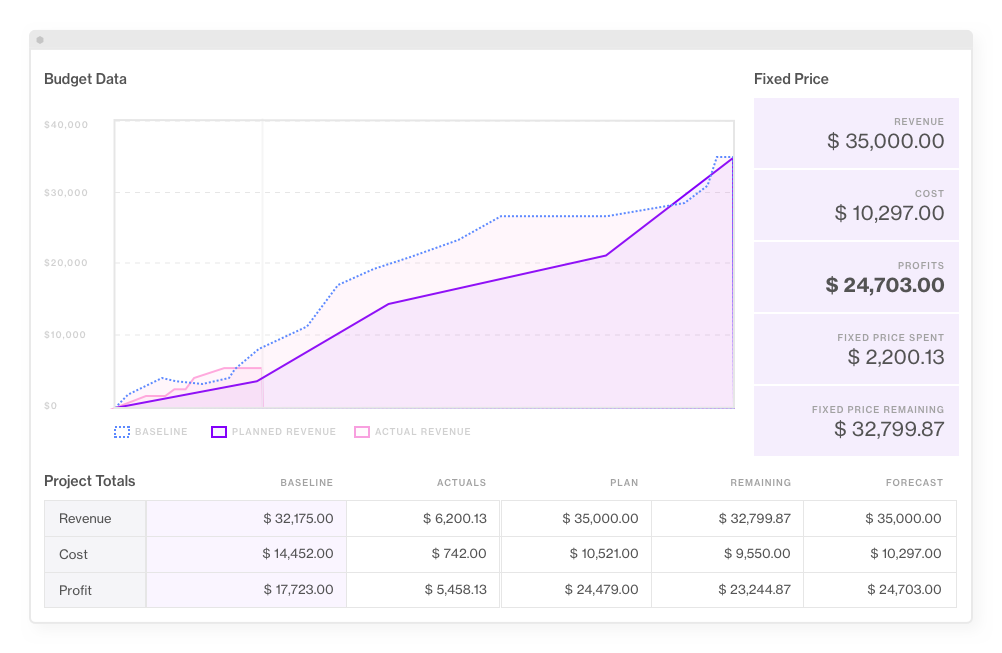Why Time Tracking is Important for You & Your Organization

You have most likely heard it before - remember your time tracking! Time tracking is key to understanding how you spend your time, personally and in business. It is key to productivity, insight, and a healthy workflow. This is equally important to everybody in an organization, or society, in general. Whether you’re an executive, a manager, or a team member, keeping track of your time is paramount.
But when it comes to business, there are many questions that come to the surface, like: How do I track time? What is the best time tracking software? How do I implement time tracking for projects? What are some time-tracking best practices? In this guide, we’ll try our best to answer them all.
- What is time tracking?
- Benefits of time tracking
- Types of time tracking
- How to introduce time tracking
What is time tracking?
Let’s start with the very basics. Time tracking usually refers to how businesses log the working hours of their employees. This measurement of hours worked on projects or tasks is then used to make sure employees are being compensated accordingly.
Not only time entries are used for payroll, but they are also a safe way for managers to gauge where the employee’s time is going and how much time it takes to complete a certain task. When you know which tasks take the most time, you can begin to reflect on whether that time is well spent. The most time-consuming tasks are not necessarily the tasks that require the most effort to complete or bring the most value. Often, quite the contrary.
These two use cases above are the most common reasons why businesses implement time tracking software, often referred to as timesheets:
59f8.jpg)
Forecast’s Team Timesheet. Forecast makes time tracking simple by using artificial intelligence to suggest the hours you need to register. Time is reported directly on each task (or project) by each team member. Total time spent on tasks will automatically be benchmarked against your estimates.
But if you dig deeper, you’ll notice that time tracking can bring businesses more than just payroll data and business insights into time spent, especially if it’s connected to your project management software.
Benefits of time tracking
For individual employees, the insights they get from time tracking can often be an eye-opener. How much of your time do you spend, browsing the web, looking through your inbox, or trying to find that one document in a pile of folders? These are often viewed as minor daily activities, but accumulated, they are probably some of the most time-consuming non-billable activities in your workweek - is that justified? Harvard Business Review’s survey on filling timesheets shows that the U.S. economy wastes a wholesome $7.4 billion a day in productivity simply because of workers who haven’t recorded their hours.
For businesses, the numerous benefits of doing time tracking include:
1. Transparency into work processes
2. Increased accountability in employees
3. Understanding of your billing and operational efficiency
4. Knowledge where resource demand is the highest
5. Tracking how the budget gets burned
1. Transparency into work processes
Making time registrations a staple in your routine, you automatically make your business more transparent. It allows you to stay on top of the working process, offering insights into the jobs being completed and their duration. Additionally, you start to understand which activities are being constantly put on the back burner and start prioritizing work better. Eventually, time tracking tools also provide the bigger picture for employees. They are able to look back at their workloads and optimize productivity where needed, while also keeping tabs on what everyone else has been doing.
2. Increased accountability in employees
The need to register time makes employees more focused as they know they have to report hours spent on tasks. At this point, everyone realizes that the clock is ticking and tries to be as much productive as possible. By looking at their week, employees will start to notice trends and patterns in their work hours and strive to minimize non-billable work.
What time tracking brings to the team is the ability to reflect and adapt. Ask yourself
- Did the task work towards a broader goal? (e.g., the business mission)
- Was the task important enough to take up that amount of time?
- Could the time have been spent more effectively and beneficially?
- Did the task pursue a personal or career goal?
- Which concrete changes did the task make?
When you’ve got some of these questions covered - it’s time to consider whether something could be changed for the better, making your workflow more efficient and effective. Could the work be re-organized for the better? Does the software or hardware need an update, did you experience that you needed to wait for somebody, or something, in order to proceed? What annoyed you in the process? Change it. These are all important questions to ask both yourself and your team. Rank the tasks based on importance and allocate your time accordingly.
3. Understanding of your billing and operational efficiency
If you’re in a service business, time tracking is key to improving operational efficiency, as it goes into your billable utilization report and highlights the productivity level of your individual contributors as well as the entire organization. This way, you can track how much time is spent on client work and bill accordingly. Increasing billable hours, in turn, is a highway to a more profitable business.

4. Knowledge where resource demand is the highest
Time spent is a key measure of resources needed. It shows whether a department needs more resources, in terms of workforce or other inputs, and it gives you insights on who brings the most value to the team. This is crucial information for the team and the organization as a whole. It could be that one person does most of the work. In that situation, maybe something needs to be changed in order to bring everybody to the same level, e.g., redistribution or sharing of responsibility and workload.
5. Tracking how the budget gets burned
What is the best way to keep your project budget actuals in sight? Time tracking, again! As employees fill in their timesheets registering time on projects and tasks, you don’t have to take any extra steps to calculate how much of the budget has already been consumed. You just need to make sure that the rate cards and hourly costs were set appropriately.

Types of time tracking
In general, with employee time tracking, you get a deeper, objective look into your organization to act upon. But you shouldn’t confuse personal time tracking with project time tracking. Here’s the difference between the two.
Personal time tracking
Several software solutions seek to ease the discovery of your digital time spent. RescueTime is one example that is able to track your digital time across devices. Which websites and apps are you using most often, and how much? The time is then categorized and presented invaluable insights with an overall productivity score. Based on this score you can compare your workday from week to week, learn from experience, and adapt your workflow accordingly.
Those tools work great for personal time tracking, or small teams, but are not yet able to scale and be efficient enough for a team of 10+, 100s, or maybe 1000s of team members. The solutions lack the direct connection to projects and tasks, and is not combined with other crucial data, such as your schedule and resources. It's simply not effective in such circumstances.
Project time tracking
However, an option that is more beneficial for larger organizations is to do time tracking directly on tasks. This is most often done in solutions that combine project- and resource management. They make it easier to manage all of your tasks across projects and the organization, to provide you and your team with valuable insights to manage time better in the future.
The Digital Project Manager, the world's largest online resource for project professionals, has combined an expert review on the 10 Best Time Tracking Tools, underscoring the importance of accurate time sheet reporting and tracking budget burn.
How to introduce time tracking to employees
Before introducing timekeeping, you’ll have to think about how everyone will take the news. The attempts to monitor somebody’s activity at work are usually not so well-received. Despite so many benefits, any kind of time management reporting is likely to cause resistance from the team, as a result of the feeling that they will be watched all the time.
What causes this reaction is the lack of understanding how the data will be used. Some may fear that their timesheets will be used against them and that they’re deliberately introduced for micromanagement. That’s why it’s your job as a manager to facilitate the conversation about tracking time and explain the use cases carefully. We can’t stress enough that to navigate the change, communication is key. Detailing the true reasons behind implementing time tracking can help you get the team’s buy-in.
Successful leaders go to great lengths to show that time tracking is beneficial for both - individuals and business entities. Team members can use time tracking to work towards their personal and shared goals - spending time where the most value is created, personally and professionally. Managers use the time tracking insights to get an accurate overview of the team’s peak performance, overall well-being and productivity, and even task distribution.
As an executive, use insights and data from time tracking to steer your organization in the right direction, put strategy into action, and ensure that every individual manager, and every individual team member, understands and pulls the organization, not apart, but towards the same mission, with the same vision in mind. That is the recipe for a successful organization.
Get started
Now that you got to know the benefits of time tracking, book a meeting with one of our productivity gurus and learn more about how Forecast can help your organization be aware of time spent and the allocation of resources across projects and tasks.
You might like to read these articles on our blog..
Subscribe to the Forecast Newsletter
Get a monthly roundup of productivity tips & hacks delivered straight to your inbox
